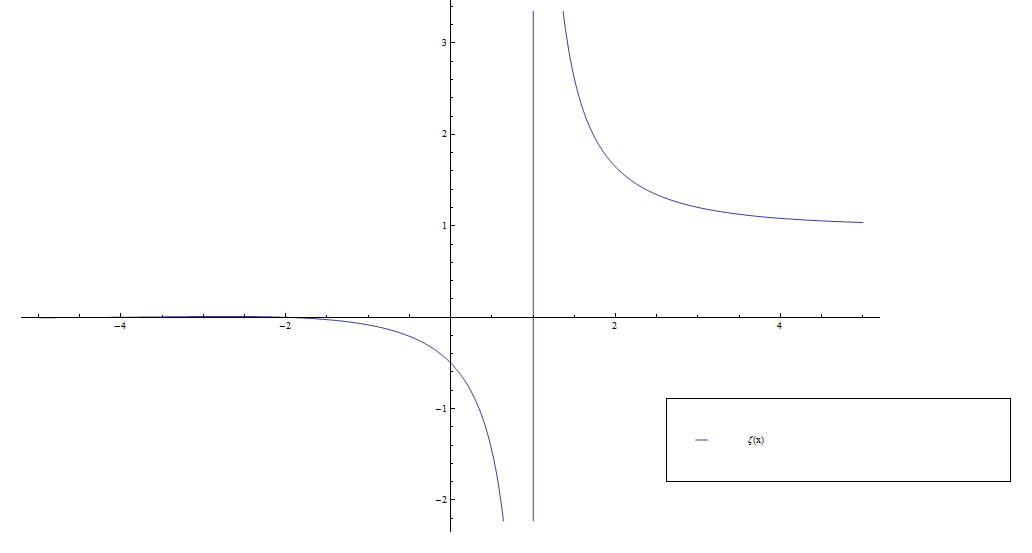Difference between revisions of "Riemann zeta"
From specialfunctionswiki
| Line 2: | Line 2: | ||
$$\zeta(z) = \displaystyle\sum_{n=1}^{\infty} \dfrac{1}{n^z}.$$ | $$\zeta(z) = \displaystyle\sum_{n=1}^{\infty} \dfrac{1}{n^z}.$$ | ||
| − | + | <div align="center"> | |
| − | + | <gallery> | |
| − | + | File:Riemannzeta.png|Graph of $\zeta$ on $[-5,5]$. | |
| − | + | File:Complex zeta.jpg|[[Domain coloring]] of [[analytic continuation]] of $\zeta$. | |
| + | </gallery> | ||
| + | </div> | ||
==Properties== | ==Properties== | ||
<div class="toccolours mw-collapsible mw-collapsed" style="width:800px"> | <div class="toccolours mw-collapsible mw-collapsed" style="width:800px"> | ||
Revision as of 06:18, 11 February 2015
Consider the function $\zeta$ defined by the series $$\zeta(z) = \displaystyle\sum_{n=1}^{\infty} \dfrac{1}{n^z}.$$
- Complex zeta.jpg
Domain coloring of analytic continuation of $\zeta$.
Properties
Proposition: If $\mathrm{Re} \hspace{2pt} z > 1$, then the series defining $\zeta(z)$ converges.
Proof: █
Proposition (Euler Product): $\zeta(z)=\displaystyle\sum_{n=1}^{\infty} \dfrac{1}{n^z} = \displaystyle\prod_{p \mathrm{\hspace{2pt} prime}} \dfrac{1}{1-p^{-z}}$
Proof: █
Proposition: Let $n$ be a positive integer. Then $$\zeta(2n)=(-1)^{n+1}\dfrac{B_{2n}(2\pi)^{2n}}{2(2n)!},$$ where $B_n$ denotes the Bernoulli numbers.
Proof: █
